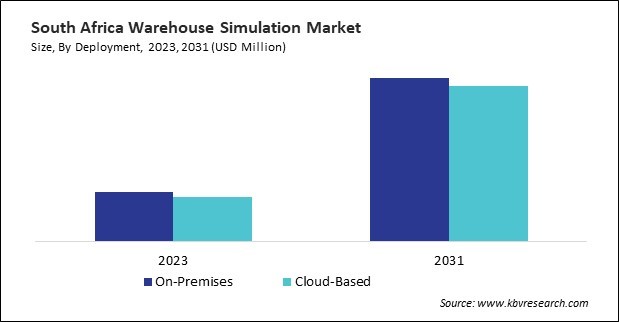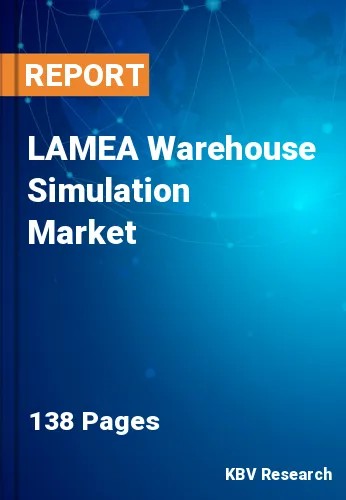The Latin America, Middle East and Africa Warehouse Simulation Market would witness market growth of 16.0% CAGR during the forecast period (2024-2031).
The Brazil market dominated the LAMEA Warehouse Simulation Market by Country in 2023, and would continue to be a dominant market till 2031; thereby, achieving a market value of $25.5 million by 2031. The Argentina market is showcasing a CAGR of 16.8% during (2024 - 2031). Additionally, The UAE market would register a CAGR of 14.8% during (2024 - 2031).

Despite the numerous benefits of this simulation, several challenges may hinder the market's growth. One of the most significant challenges is the high initial investment cost associated with implementing simulation software. Many of these simulation tools require expensive licenses, customization, and integration with existing systems, which can be a barrier for small and medium-sized enterprises (SMEs).
However, as companies expand, they need warehouses in multiple locations to manage supply chains effectively. Each location may have different logistical challenges based on the geography, regulations, and local market demand. This simulation software allows businesses to model different configurations and processes in each location, ensuring they can adapt their operations to local conditions while maintaining efficiency.
South Africa’s increasing demand for this simulation is closely tied to the modernization of its manufacturing and logistics sectors. The government’s Industrial Policy Action Plan (IPAP) encourages businesses to adopt technologies that enhance productivity and efficiency, particularly in the manufacturing and logistics industries. These simulation tools are being adopted to model and optimize warehouse layouts, improve inventory management, and enhance supply chain performance. In South Africa, businesses are increasingly using these tools to address challenges such as fluctuating demand, labor shortages, and the need for greater supply chain visibility. This shift toward digital transformation is helping South African companies compete in the market by improving their operational efficiency and reducing costs. Thus, the region’s growing focus on automation and supply chain modernization suggests that the demand for these simulation tools will continue to rise in the coming years.
Free Valuable Insights: The Worldwide Warehouse Simulation Market is Projected to reach USD 1.4 Billion by 2031, at a CAGR of 14.2%
Based on Deployment, the market is segmented into On-Premises and Cloud-Based. Based on Vertical, the market is segmented into Automotive, Consumer Electronics, Healthcare & Pharmaceuticals, Food & Beverage, Retail & E-commerce, Logistics & Transportation, and Other Vertical. Based on Type, the market is segmented into Discrete Event Simulation (DES), Agent-Based Simulation (ABS), System Dynamics Simulation, and Hybrid Simulation. Based on countries, the market is segmented into Brazil, Argentina, UAE, Saudi Arabia, South Africa, Nigeria, and Rest of LAMEA.
By Deployment
By Vertical
By Type
By Country
Our team of dedicated experts can provide you with attractive expansion opportunities for your business.

